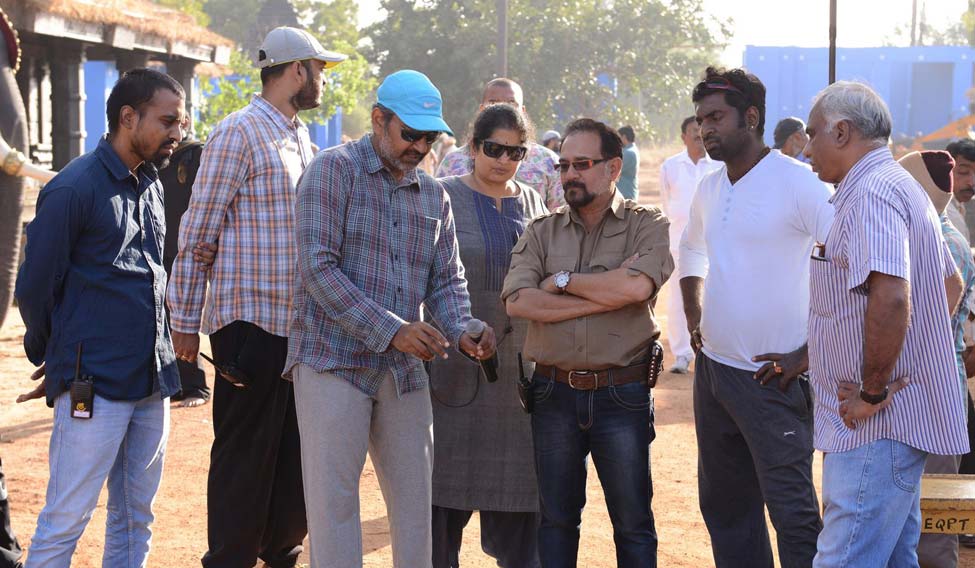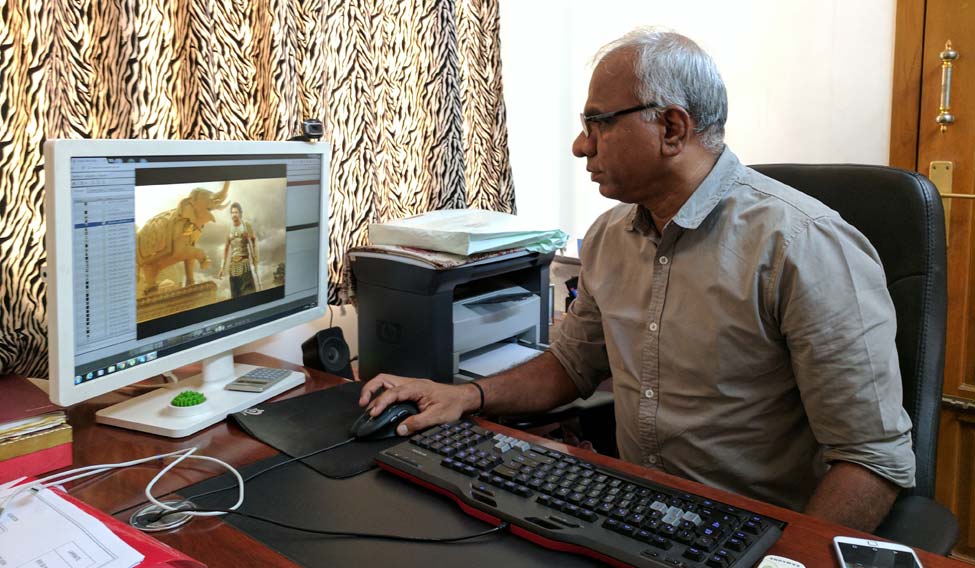The record-breaking box office performance of Baahubali: The Beginning and Baahubali 2: The Conclusion resulted in the coming of age of a vital element in the filmmaking process that largely contributed to its success—visual effects (VFX).
“Not that VFX has not been around in the film industry,” says R.C. Kamalakannan, VFX Supervisor for Baahubali 2 and a freelance VFX professional. “One can recall some of our films such as Robot/Enthiran, the Dhoom series and Krrish series, besides regional language films like Magadheera and Naan-e/Eega, which have used VFX in a large way. But, the magnitude of its implementation in films like Baahubali has made VFX a vital and an integral input to the movie-making process”.
CGI, animation and VFX are terms being bandied about in film industry, these days. While Computer Generated Imagery (CGI) is a broad term, it encompasses several activities, primarily animation and VFX. Animation is a technique which causes pictures and images to move, much like in cartoons and gaming, while VFX is a way of mixing or integrating real film footage with false or animated images specifically created by the VFX team.
“Worldwide, especially in Hollywood, VFX is an integrated part of film production process. In India, animation and VFX activities are still considered an ITeS, thanks largely to the pioneering work done by IT-related companies like TCS, Accel, EFX and, earlier, Pentamedia. Even after two decades of having films with VFX inputs, the film industry has still neither embraced it as their own nor supported the VFX experts who relentlessly work on several productions, by allowing them to form an association of members, similar to other crafts within them. Today, VFX as a craft form is essential to every film production,” says Kamalakannan.
Interestingly, the very nature of how film producing studios and production companies function in India, is itself different from those in Hollywood or other film-producing countries. “Abroad, there are three separate segments of a film production—pre-production, production and post-production—which is common here, too. But there, the work done for each segment is handled by studios specialising in those specific tasks. Elaborate planning is done at the first stage, especially when it comes to VFX work. The VFX supervisor, based on the director’s vision, engages the team to work out a plan for data collection and other inputs. Once these are approved, the line supervisor will be thoroughly briefed for implementation of techniques during the shooting process. This stage is very important, because, if the data collection is not proper, the VFX studio will not be able to do their work in post-production,” explains Kamalakannan.
He also points out that it is important to have a producer and director who are knowledgeable about VFX or is open to hiring an executive or creative producer and associate director who can translate the director’s screenplay into an outstanding film, embellished with visual effects. “This is slowly happening in our country and Bollywood has already taken many steps in that direction. Fortunately, many VFX professionals with the required skill sets are available in the south and whose services are sought by Bollywood,” notes Kamalakannan.
For Baahubali 2, several segments were done in numerous VFX centres across the globe with a standardised pipeline and application base so that seamless integration was possible. “Towards the end, racing against time, we even hired the services of a small specialized unit in Tashkent, a country which is not usually known for VFX skills. But, their set up was ideal for us to get the desired result in the given time frame. In India, there is a dearth of specific skill operators as most of them do multitasking, in contrast to the facilities available, say, in the US,” he says.
Learning the skills
But, the need of the hour is to have advanced academies and institutes to teach VFX. “Already many Indian companies are doing stellar post-production work for foreign films. When more skilled students come out of the VFX and animation institutes with both their craft and application of an international level, why would some of our production companies seek VFX-specialised units abroad to do our work? The way forward is for an individual not to become a jack of all trades but specialise in certain aspects of VFX like rigging, animation, rendering and lighting, so that post-production work is simultaneously done in several studios to save time,” says Kamalakannan.
 Director Rajamouli (in blue cap) explains a scene as Kamalakannan (extreme right) and others look on
Director Rajamouli (in blue cap) explains a scene as Kamalakannan (extreme right) and others look on
Teaching methods in many of our own institutes and academies have to keep up with those abroad. “Most US academies teach application-based VFX courses and not just craft-based. In India, only the craft is taught and the student has to spend more money and time to specialise in the particular application he is interested in. It would make more sense to teach both simultaneously. There is vast scope for such students who can get absorbed by VFX studios immediately as the demand is much more than the supply and it will only grow as more VFX films get produced and more foreign studios avail of our services,” feels Kamalakannan. Many VFX application developers and software companies have reasonably priced student versions along with almost free study material. The college labs can be best utilised for VFX studies with faculty being trained by experienced VFX professionals like Kamalakannan and others in the field.
The business side of VFX
The business side of visual effects in India is largely dependent on directors with strong scripts. Keeping aside the basic wire-removals and clean-ups, set extension is the crucial part of VFX in modern filmmaking. “The song Aathi in the Vijay-starrer Kaththi, was shot in an A/C floor, with chroma-key surrounds and digitally extended. Photoreal rendering is the key here and, contrary to the popular belief that CGI is expensive, it actually helps in keeping overall budget to the minimum. Production designers have started bringing CGI in the basic concept itself and stunt co-ordinators have overwhelmingly started using CGI vehicles crashes and building destructions. In all my films, digital doubles of lead characters have been a norm. With strict realistic animal usage laws, CGI animals (and characters) are being widely used. So, VFX is definitely here to stay.
“In Magadheera, the CGI budget was 12 per cent, in Eega it was 15 per cent and in Baahubali 2, it must be closer to 20 per cent of the overall production budget. I listened to a script recently, majorly based on animals. The production house is in direct contact with a studio outside India (but within Asia) and I am sure, going by the script, the CGI budget should be at least 40-50 per cent of the overall budget. Since it is a home production for the hero of the film, this is possible. Now, after Baahubali 2’s astronomical figures at the box-office, popular heroes, who take 50-60 per cent of overall budget will feel the pressure to bring down their take-home remuneration. The cost factor of a medium-level VFX studio in India and abroad is almost the same. Abroad, we get ‘specialised’ skills and we are not averse to sharing credits with other studios, but in India, studios want sole credit. Now, with more money pouring in for VFX-based projects, this trend is set to change,” says Kamalakannan.






